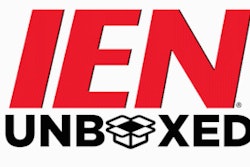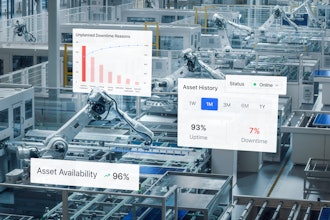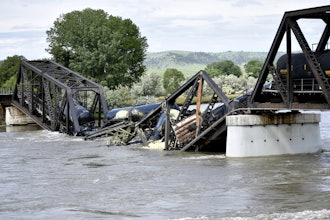
Advance Work Packaging (AWP) is built on the premise that aligning engineering and procurement packages results in more efficient productivity.
The AWP process is an industry response to a reduction in resources and the overall cost and capital of projects.
By creating these packages to deliver work, industrial projects can be delivered at higher quality, even faster, and with less cost. Here are details on advantages, key solutions to challenges, and insights for today’s leaders.
Advantages
The advantages of AWP are the alignment of engineering work packages with construction work packages. Integrating the different sectors results in collaboration in delivery and creates a mutual respect between design and construction through the course of a project, culminating in its completion.
As AWP matures, so too will processes align and integrate with current and future technologies. Projects will no longer focus solely on process design, but also building design. As project teams begin to grasp the relationship between preparation and productivity, project teams will be better able to expedite the process.
Challenges + Solutions
The primary challenges facing industry today deal with the current contracting strategies. In a perfect world, project team professionals want to openly share information, yet industry contracts do not always support this type of collaboration.
The current context for contracts is the design-bid-build scenario, which is not typical in the AWP realm. With AWP, there is more of a design-build or CM at-risk delivery method that takes a top-down approach to discern how risk is handled. In the current context, there is more monetary risk associated with who controls the project. AWP creates a shared risk/reward scenario in a joint venture between all parties regardless of whether the project calls for an IPD or IFOA contract.
AWP changes this dynamic. With AWP and the right contracts in place, decisions that need to be made can be streamlined to release work, thereby limiting waste. In this way, AWP aligns with LEAN project delivery methodology.
To successfully employ the AWP approach, project team members need to understand how the work is currently being done and how it needs to be done. This approach, which allows teams to assist one group without disenfranchising another, means all players must be involved to ensure the success of the project.
AWP focuses on collaboration and joint ownership between all parties. It shifts reward and risk to all parties, which opens the realm of collaboration.
Collaboration is critically important. On a recent project, project team members developed a packaging scheme and how they would deliver the work. The packaging scheme and work delivery broke up the work in a way that made it easier to contact to subs helping construction, although it put more burden on the design entities as it increased extra coordination and took decisions out of sequence.
Sometimes such a plan can look sound in theory but does not consider the intricate details of how a team puts together the whole design project, especially one that supports a process design. Process decisions weigh very heavily on openings and additional supports, and when those decisions are not considered in the beginning, teams are left to respond with bulletins, change orders, and other issues that impact schedules and costs.
The original intent in this case was to provide a plan that addressed all design requirements. Depending on how a team breaks up work influences procurement, bidding, etc. If a team is thinking about one package separated out, the team sets the expectation of when design work needs to be finished.
When teams do this planning exercise to create delivery plans, all stakeholders need to be involved. In this instance, the plan elevated one discipline and unintentionally challenged another. If the team was collaborative, they may have still come to this resolution but the team would have foreseen these issues and looked for opportunities.
As an industry, teams need to be cognizant of all the players, and create a hierarchy of decision making. Typically, equipment is at the top. The challenge is to do it better by understanding all influences, not just procurement. That is where packaging becomes an integral part of an effective decision making process.
Owners are starting to play an important role in shifting the dynamics of contracting. Money changes behavior and gives all parties a stake in failing or succeeding together.
Insights + Strategies
Picking the right people is key to the success of a project. If leaders are only selecting on price, stakeholders won’t have the right people involved to work in this collaborative environment. It’s about qualifying, evaluating, and selecting people who believe in the AWP process.
Using technology that integrates is another especially key element. Teams can plan the packages but much of the coordination depends on different software for different disciplines. This challenge can be overcome but requires upfront planning on how data will be exchanged as packages are created. It is important to define boundaries and expectations depending on what needs to be done with data.
Qualifying standards must be defined on what technology is needed to deliver work. While being price conscious and having the right engineering qualifications is critical; success requires selecting the right tools and the right people to use those tools.
The AWP process uses a variety of tools such as procurement tools, bidding tools, documentation tools, and collaboration tools. There is a lot of redundancy across sectors but teams who are doing it well are streamlining the process. Apps are responding to that need as well.
One example is the RFI submittal process. Previously submittals were a transactional, correspondence-heavy communication process that documented everything. The transactions created a paper documentation log. Now, industry leaders see a change in this behavior as team members are using apps and mobile activity to expedite decision making. This approach maintains project momentum.
Another example are as-built drawings. Today leaders request as-built drawings, which can take anywhere from two days to three weeks to receive. Then a team has to validate those drawings. During that time period, team members have to have already started working to complete design development to meet the deliverable. Project teams don’t have time and resources to do it twice if there are errors. To expedite design development prior to receiving the drawings, teams can utilize laser scanning for a preliminary layout. When the drawings arrive, the project team validates the layout against the reality capture data which tends to almost always be more accurate and up to date. While the wait may be challenging, stakeholders want to keep in mind that they may spend a little more to have a more accurate design and stay on schedule.
Project team leaders are incorporating visual tools such as KanBan Boards or Commitment-based online software to display deadlines and weekly workloads and look aheads. As applications emerge, savvy teams test and evaluate them to find the best solution. The tools should provide flexibility in a transparent environment so all contributors know what is expected and if they are meeting project commitments.
It is important to set expectations with project stakeholders so that information can be used in the next part of the work lifecycle. This approach links back to contract alignment and contract language, which are a key to integrating the different sectors in a collaborative process that results in success of the project—advancing your project with advance work packaging.
Lauren Collier, Associate AIA, is the Department Manager, VDC Global Initiatives and Senior Associate at SSOE Group, a global project delivery firm for architecture, engineering, and construction management. Her creative passion lies in Lean, continuous improvements, and innovative model/data use solutions for design and construction operations.























